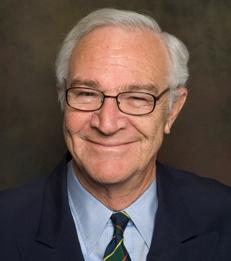Opinion
Waiting for the Conventions
—


But after the conventions, the two nominees will have to battle each other, and a hard fight ought to emerge over economic policy, the key issue to most voters.
By Roy C. Smith
For many observers, but certainly for economists, this is likely to be the most unpredictable, exasperating and mindless US presidential election contest in generations. It will also be the most interesting.
Results from the early primary elections for delegates to the presidential nominating conventions in July have front runners Donald Trump and Hillary Clinton modestly ahead as the process heads into “Super Tuesday” (March 1), when 12 elections are to be held, followed by another 20 in the following two weeks. Delegates are awarded on a proportionate basis before March 15, and winner-takes-all afterwards. Most of the large states have their primaries after March 15. California, the last one, is on June 7.
Primaries are brutal tests of endurance, organisation, media management and fundraising. Fewer than 20% of registered voters participated in the 2012 presidential primaries, so to win, candidates must be able to attract the votes of those motivated to show up, usually the most politically extreme.
This year, both parties have been greatly shaken up by populists of the sort that never would have impressed voters in the past. Both Trump and Bernie Sanders, the lifelong socialist seeking the Democratic nomination, have enjoyed surprising success because they have tapped into deep-seated anger and frustration of blue-collar workers whose real incomes have been stagnant since the 1970s and whose economic future seems bleak and beyond their own control.
Read full article as published in Financial News.
___
Roy C. Smith is the Kenneth G. Langone Professor of Entrepreneurship and Finance and a professor of Management Practice. Brad Hintz is an adjunct professor of Finance.
Results from the early primary elections for delegates to the presidential nominating conventions in July have front runners Donald Trump and Hillary Clinton modestly ahead as the process heads into “Super Tuesday” (March 1), when 12 elections are to be held, followed by another 20 in the following two weeks. Delegates are awarded on a proportionate basis before March 15, and winner-takes-all afterwards. Most of the large states have their primaries after March 15. California, the last one, is on June 7.
Primaries are brutal tests of endurance, organisation, media management and fundraising. Fewer than 20% of registered voters participated in the 2012 presidential primaries, so to win, candidates must be able to attract the votes of those motivated to show up, usually the most politically extreme.
This year, both parties have been greatly shaken up by populists of the sort that never would have impressed voters in the past. Both Trump and Bernie Sanders, the lifelong socialist seeking the Democratic nomination, have enjoyed surprising success because they have tapped into deep-seated anger and frustration of blue-collar workers whose real incomes have been stagnant since the 1970s and whose economic future seems bleak and beyond their own control.
Read full article as published in Financial News.
___
Roy C. Smith is the Kenneth G. Langone Professor of Entrepreneurship and Finance and a professor of Management Practice. Brad Hintz is an adjunct professor of Finance.
